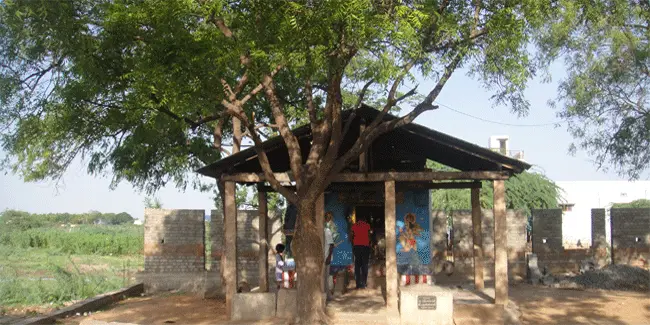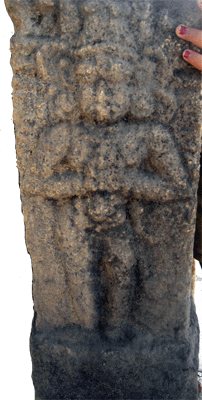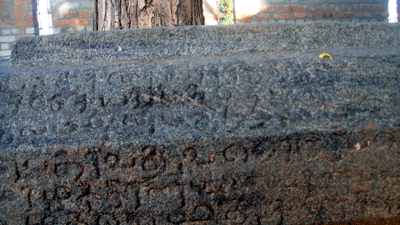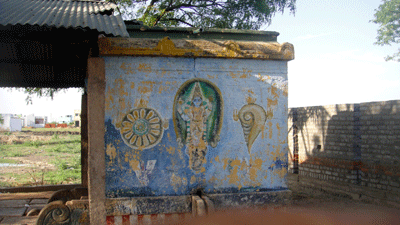
Preface
In the history of Tamilnadu, many women of the royal family have gained great popularity. In the Chola dynasty, Chembiyamaadevi, Kundavai, Veeramaadevi, and Mangairkarasi in the Pandya dynasty are the names that are still remembered. They are the ones who have maintained a great deal of spirituality and have done many charities to retain their names in the history of Tamilnadu.
They were not connected directly to governance but had a say and their words were valued. In contrast to this, there were few queens who distinguished themselves in the royal authority and attracted people's attention and their hearts. Two of them, Rani Mammamma and Velu Nachiyar, are from the country of Pandyas. Let us look at some unknown stories and works of Queen Mangamma.
Mangammal
 In the words of Paranthamar, she is great among the Telugu royals. She is not only the leading light of the Telugu community but also a great woman belonging to the Nayakkar clan. She was the wife of Sokkanathar who was the grandson of Thirumalai Nayakkar. In 1689, a son was born to Muthu Verrappan III and Muthammal was named Vijayaranga Sokkanathan. Even before his birth, his father Muthu Veerappan had died of chicken pox. On the fourth day after his birth, his mother Muthammal, had taken away her own life.
In the words of Paranthamar, she is great among the Telugu royals. She is not only the leading light of the Telugu community but also a great woman belonging to the Nayakkar clan. She was the wife of Sokkanathar who was the grandson of Thirumalai Nayakkar. In 1689, a son was born to Muthu Verrappan III and Muthammal was named Vijayaranga Sokkanathan. Even before his birth, his father Muthu Veerappan had died of chicken pox. On the fourth day after his birth, his mother Muthammal, had taken away her own life.
The great responsibility of raising the baby fell on Mangamma. Then Queen Mangamma acted as Regent from 1689 till 1706 and ruled Madurai to become eternally famous.
The rule of the Mangamma:
The political atmosphere at the time when she ruled Madurai, was marked by the northern part of the country being ruled by Aurangazeb, stably. Sri Veera Sivaji who had been a force who resisted his (Aurangazeb) rule had passed away. Almost all the kings of the South had been subordinate to Aurangzeb and were paying tribute. And in the given circumstance, Mangamma could not stand as an exception.
Even though she was paying tribute to Aurangazeb, she used her diplomacy to take assistance from him to conquer her neighbours. The rulers of Tanjavur and Udaiyarpallayam were ruling after acquiring some territories of Madurai. These places were brought back to Madurai rule, with the help of Generals of Aurangzeb to whom she had given some valuables as present. The Mysore ruler Chikka Devaraya was forced to surrender.
She had made the ruler of Trivankur Ravivarma surrender with the help of her able General Narasappayar. River Kaveri was the source of sustenance for agriculture in the Tiruchirappalli and Thanjavur districts. The ruler of Mysore Chikka Devaraya was building a dam across the river Kaveri. She had mobilised a force with the assistance of the ruler of Thanjavur and decided to destroy the dam that was being constructed across River Kaveri. Fortunately, since the dam was washed away by the heavy rains even before that invasion, the ruler of Mysore escaped the wrath of Mangamma.
The inscription states that in the Saka year 1615 [1693 A.D] Rani Mangamma had built temples for the benevolence of her father Muthiyappa Nayakar, which included the Hanumar Azavar and Alankara Pillayar temples in Avaniyaa puram. A new temple had been constructed and land measuring two ‘ma’ had been donated to these temples during Mangamma times.
Secular Ruler she was
She had supported Saivaits to which sect she belonged and in the same spirit she supported Christianity and Islam. During her tenure as ruler, a road was built across the country, and the old highways were relayed, new trees planted, and ponds and wells were dug, while the old ones were renovated. The facilities for highway travelers were improved. These welfare measures for the subjects were part of her good governance. Today, the roads in many small towns in the southern part of the Madurai province are known by the name ‘Mangalammala Salai’.
Contribution for Temple works
Even today we also see her contributions in some of the Saiva temples as a symbol of her act of good governance. The Nagaraa mandapam in front of the Madurai Meenakshi Sundareswarar Temple was built by Mangamma. The nagaraa (drum) was placed on the top of this monumental mandapam. During all the five times when the prayers were offered to the deities at the temple, the drum will be played to inform about the puja to the deity. In the pillar of the southeast corner of the mandapam, the statues of Queen Mangamma and her grandson Vijayaranga Sokkanathar are found.
In the small mandapam on the west bank of the Potramarai pond in Meenakshi Amman temple, there is a pictorial depiction of the wedding of Menakshi-Sokkanathar. In this, the queen Mangamma and her grandson Sokkanatha are shown. Both their names are written in Tamil and Telugu script. In the opposite side, commander Ramayer is also shown amongst those who had gathered to witness the wedding. But his name is incorrectly written as Ramaparayar. This pictorial painting is about three hundred years old.
The Mandapam in front of Tiruparankundram temple was built by Queen Mangamma. In the row of pillars to the west of this mandapam, the sculpture of the wedding of Devasena with Kartikeya has been sculpted. In the pillar just opposite this, the figure of Queen Mangamma and her grandson witnessing the wedding of Karthikeya and Devasena has been sculpted.
The building of today's Gandhi Museum is said to belong to Mangamma’s period. There is a choultry just opposite Madurai Railway station which is functioning in the name of Mangamma and known as ‘Mangamma chatram’. The place where the queen had lived during her last days is at the northeast end of the Meenakshi Amman Temple and till recently a vegetable market was functioning at this place.
Mangamma’s inscription in Vallanandapuram
 Avaniyapuram is a suburb of Madurai on the way to Aruppukkottai. The name for this place had been derived from the names of Avani Narayanan and Avinipasekaran, who were Pandya kings. There is a residential area named Vallaananthapuram in the east of the Avaniya Puram. This place Valaananthapuram derived its name from the Pandya king named Sri Vallabhan. A Perumal Temple was constructed by the Pandya king Sri Vallaba Parankathan during the period between 1104 and 1125. The Perumal temple was known as Sri Vallabha Vinnagaram. He also created a settlement for the Brahmins to maintain the temple and named the settlement Sri Vallabha Mangalam. Today, there is no such settlement is found. We know of this settlement from inscriptions found in some broken boulders.
Avaniyapuram is a suburb of Madurai on the way to Aruppukkottai. The name for this place had been derived from the names of Avani Narayanan and Avinipasekaran, who were Pandya kings. There is a residential area named Vallaananthapuram in the east of the Avaniya Puram. This place Valaananthapuram derived its name from the Pandya king named Sri Vallabhan. A Perumal Temple was constructed by the Pandya king Sri Vallaba Parankathan during the period between 1104 and 1125. The Perumal temple was known as Sri Vallabha Vinnagaram. He also created a settlement for the Brahmins to maintain the temple and named the settlement Sri Vallabha Mangalam. Today, there is no such settlement is found. We know of this settlement from inscriptions found in some broken boulders.
Hanumar temple built by Rani Mangamma:
A Hanumar Temple was built at the time of the Rani Mangamman in the same place where the Vinnagaram was there. From here there is a road laid to Aruppukkottai and Tiruchiriyal via Aviyur, Kariapatti and this was built by Rani Mangamma. It was named as Mangammal Salai. There was a well near this temple for the travelers’ use and to quench their thirst. Today, there is no trace of this well which was in the name of Mangamma.
Today the Hanumar temple built by Mangammaal is only found. The inscription on a stone in front of the temple gives a lot of information.
On the three sides of the stone slate, these inscriptions are found: In total eighty-six lines are found. The inscription states that in the Saka year 1615 [1693 A.D] Rani Mangamma had built temples for the benevolence of her father Muthiyappa Nayakar, which included the Hanumar Azavar and Alankara Pillayar temples in Avaniyaa puram. A new temple had been constructed and land measuring two ‘ma’ had been donated to these temples during Mangamma times.
New found facts about Rani Mangamma
Sri Srinivasa Iyangarar son of Sri Kedazapha Iyangar belonging to Athreya Gothram was appointed to manage this temple. On the pillar that is found beside this inscription, the sculpture of Rani Mangamma is found. She is seen standing with folded hands in an ‘anjali’ posture and having a sword in her waist belt. The history of Rani Mangamma will see a new light based on this inscription. So far the name of the father of Rani Mangamma which was not known has been brought to light for the first time as Sri Muthiyappa Naicker.
Sri Anjaneya
 The murtham is five feet tall. Murtham had been carved out of a single granite stone in ‘ardha shila’ form.
The murtham is five feet tall. Murtham had been carved out of a single granite stone in ‘ardha shila’ form.
Lord is seen in a standing posture and facing east. The standing posture is very graceful and pleasant to the eyes. Devotees will like to look at the graceful posture for a long since it is bound to give serenity to the mind.
Lord’s lotus feet adorning hollow anklets are seen firmly rooted to the ground. The left leg is graciously bent and the lotus foot is slightly turned forward. His right leg is straight and the lotus feet are straight-looking. In His hands, He is wearing a Kangan on the wrist and a keyur on the arm. His left hand is seen folded and holding the short stem of the sowgandhika flower. His right hand is seen raised in abhaya mudra, assuring the devotee of fearlessness. His tail is seen raised and goes around His right hand, and takes a bend above the head. Lord is wearing two ‘malas’ on His neck, one of which is close to His neck. Lord’s face is pleasing to the eyes and attracts the attention of the devotees. He is wearing earrings which is long and touching the shoulders. Neatly combed kesam of the Lord kept above the head with the help of ornamental ‘kesa bhandha’. A small part of kesam is flowing to the sides of His head, adding beauty to the deity. The Lord is facing straight (‘yathur mukhi’) and it appears that the eyes of the Lord are directly showering blessings on the devotee.
Location of the temple: "Sri Anjaneya Temple, Avaniyapuram, Madurai, T Nadu"
Experience
Darshan of Yathur Mukhi Sri Anjaneya Swamy of this kshetra is sure to bestow confidence to face any situation with total abidance to the righteous path. Diplomacy to handle any situation and courage to face difficulty will be easily evoked in the presence of the deity.
SRI HANUMAN THINKS DIFFERENTLY, THINKS FAST
THINKS AHEAD AND ACTS FOR SURE
Ed [December 2017] Sri Hanumath Jayanthi Special
Updates: [Jan 2025]
* read about the author
